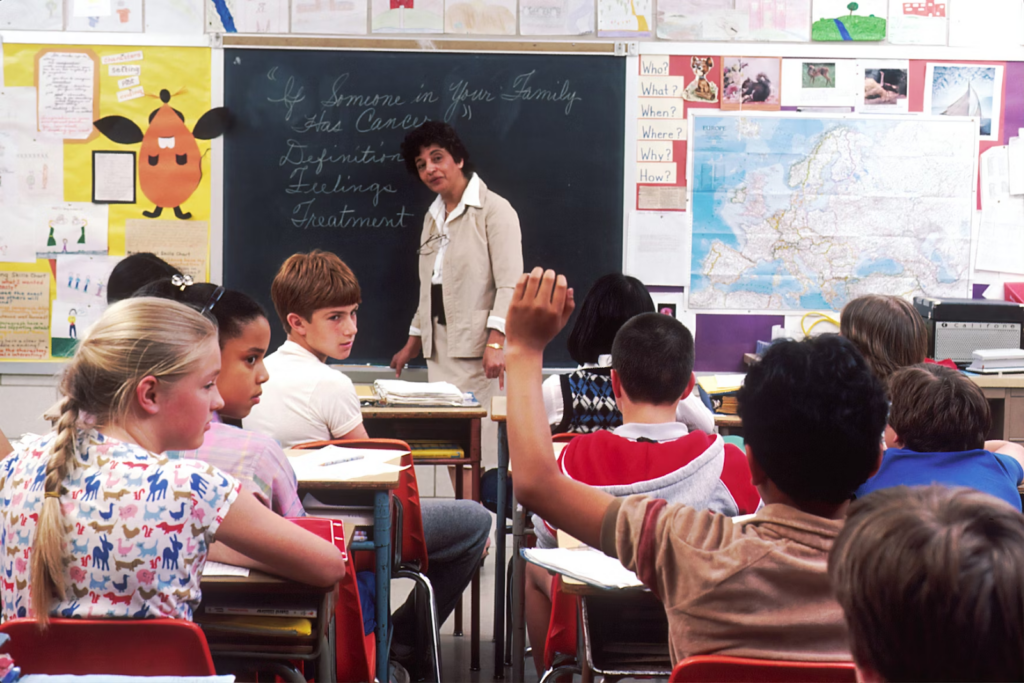Culturally responsive teaching, also known as CRT, emphasizes the importance of integrating students’ cultural backgrounds into educational practices, which is particularly vital in diverse classrooms.
Modern classrooms are experiencing a significant increase in diversity, driven by factors such as global migration patterns, increased recognition of diverse learning needs, shifts in societal demographics, and inclusive education policies.
High school teachers expect 58% of White students to graduate from college, compared to only 37% of Black students. This disparity reflects a cultural gap that can lead to disengagement and academic achievement gaps among students of color.
This diversity encompasses not only ethnic and linguistic differences but also variations in socioeconomic backgrounds, learning abilities, and cultural practices. Let’s dive in.
The Need for Culturally Responsive Teaching
Culturally responsive teaching is an educational framework that recognizes the importance of including students’ cultural references in all aspects of learning. Key principles include:
- Validation of students’ cultural identities
- Incorporation of diverse cultural perspectives in the curriculum
- Promotion of equity and mutual respect
- Development of critical consciousness among students
- Use of varied instructional strategies to address different learning styles
Here are some of the challenges faced by educators in diverse classrooms:
- Language Barriers: Communicating effectively with students and families from diverse linguistic backgrounds.
- Cultural Misunderstandings: Navigating cultural differences in behavior, learning styles, and expectations.
- Curriculum Relevance: Ensuring curriculum materials reflect and engage diverse student populations.
- Assessment Equity: Developing fair assessment methods that account for cultural and linguistic differences.
- Professional Development: Acquiring skills and knowledge to effectively implement culturally responsive practices is essential for speech-language pathologists. This includes staying updated on the latest research and best practices, as well as developing cultural competence.
Continuing education is a critical component in ensuring that speech-language pathologists remain effective and adaptable in their roles. Cheap online speech pathology programs can be a valuable tool for professional development. These programs offer flexible learning opportunities to help practitioners enhance their skills and knowledge without interrupting their busy schedules. By taking advantage of these programs, speech-language pathologists can improve their ability to provide culturally responsive care to diverse populations. - Resource Allocation: Securing adequate resources to support diverse learner needs.
Educators must continually adapt their practices to meet the evolving needs of increasingly diverse student populations, necessitating ongoing professional development and institutional support.
The Role of Translation in Education
Translation services in education facilitate comprehension and learning for non-native speakers through:
- Curriculum Material Translation: Textbooks, worksheets, and digital resources are translated to ensure access to core content.
- Instructional Support: Real-time translation during lectures or discussions aids immediate understanding.
- Assessment Adaptation: Translated tests and exams allow for accurate evaluation of subject knowledge rather than language proficiency.
- Multilingual Glossaries: Subject-specific terminology is translated to build academic vocabulary in multiple languages.
Furthermore, the impact of translation on student participation and interest contributes to increased student engagement through the following:
- Reduced Cognitive Load: Students can focus on content comprehension rather than language decoding.
- Increased Confidence: Access to translated materials empowers students to participate more actively in class discussions.
- Cultural Relevance: Translated content often includes culturally relevant examples, increasing student interest.
- Parental Involvement: Translated communications enable non-English speaking parents to support their children’s education more effectively.
Translation services play a crucial role in creating inclusive educational environments, facilitating comprehension, and fostering engagement among diverse student populations. By breaking down language barriers, these services contribute significantly to equitable access to education and improved academic outcomes for non-native speakers.
Benefits of Translation in Culturally Responsive Teaching
Academic Achievement
Translation plays a pivotal role in improving comprehension and academic performance within culturally responsive teaching frameworks. By providing students with access to curriculum materials in their native languages, translation bridges the gap between content knowledge and language proficiency. This approach allows students to engage more deeply with the subject matter, leading to improved understanding and retention of key concepts.
Furthermore, longitudinal studies have shown that students who have access to translated materials throughout their academic careers tend to develop stronger bilingual proficiency, which correlates with higher cognitive flexibility and problem-solving skills.
Social and Emotional Development
The implementation of translation services in culturally responsive teaching fosters a sense of belonging and confidence among diverse student populations. When students see their native languages valued and incorporated into the learning environment, it validates their cultural identities and experiences. This recognition can lead to increased self-esteem and a more positive attitude towards education.
Personal stories and testimonials from students and teachers underscore the emotional impact of translation in educational settings.
Parental Involvement
Translation services play a crucial role in facilitating communication between schools and non-English-speaking parents. By breaking down language barriers, these services enable parents to actively participate in their children’s education, attend parent-teacher conferences, and understand school policies and expectations. This increased involvement has been shown to positively impact student performance and overall school engagement.
Effective parent-teacher communication can be achieved through various tools and strategies. Many schools utilize professional interpretation services for in-person meetings and provide translated versions of all important documents, including report cards, permission slips, and school newsletters.
Digital platforms with built-in translation features have also become increasingly popular, allowing for real-time communication between teachers and parents. Some districts have implemented mobile apps that provide instant translation of text messages and notifications, ensuring that all parents remain informed and connected to their children’s educational experiences regardless of language barriers.
Conclusion
By facilitating understanding, promoting engagement, and fostering inclusivity, translation enhances academic achievement, supports social-emotional development, and strengthens the crucial connection between schools and families. As classrooms continue to diversify, the role of translation in education will remain paramount, serving as a cornerstone for equitable access to quality education and the cultivation of global citizens prepared for an interconnected world.

